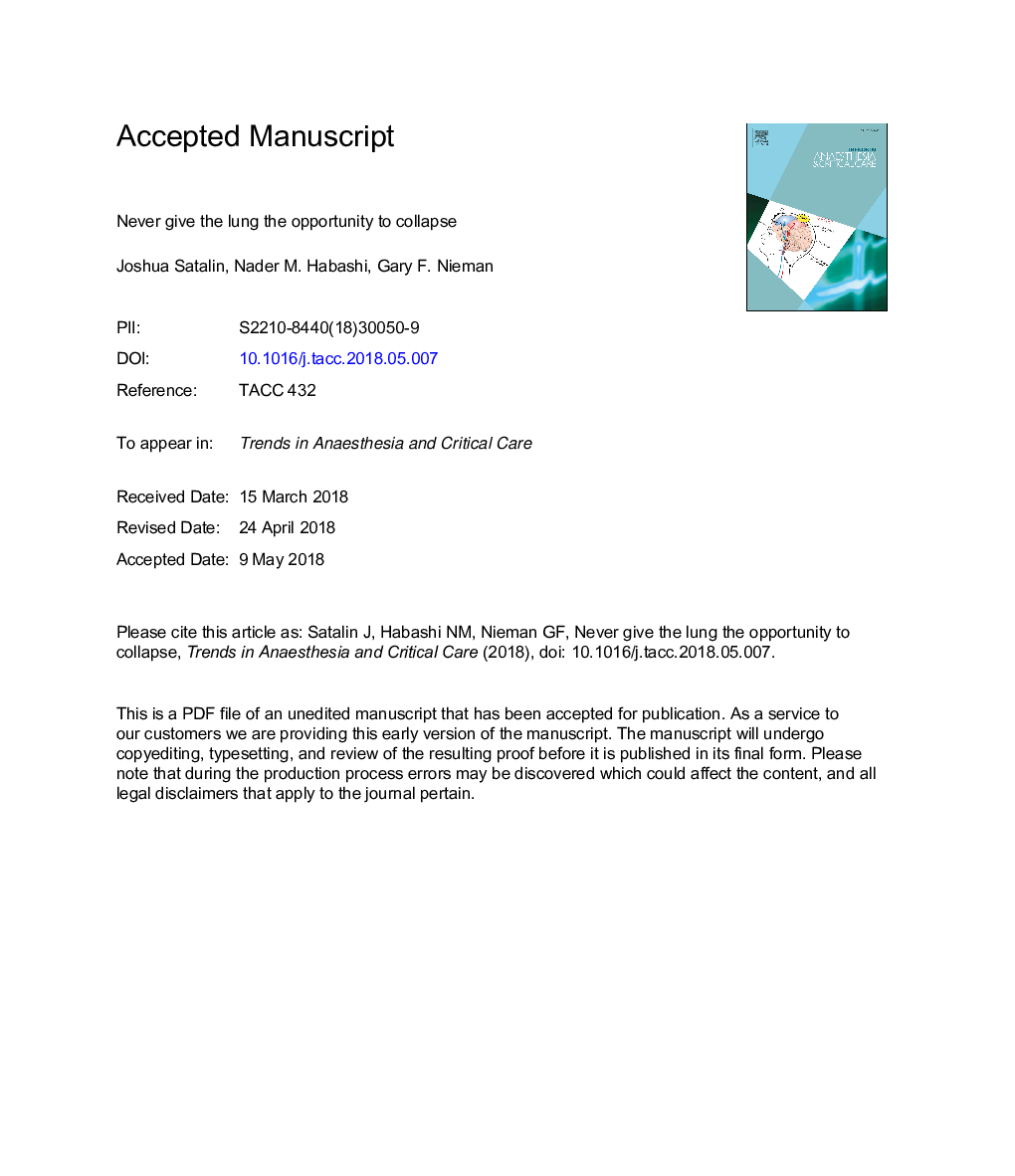| Article ID | Journal | Published Year | Pages | File Type |
|---|---|---|---|---|
| 11022695 | Trends in Anaesthesia and Critical Care | 2018 | 27 Pages |
Abstract
Acute respiratory distress syndrome (ARDS) was first identified in 1967, as a syndrome associated with heterogeneous lung collapse and a very high mortality. It has been shown that maintaining homogeneous ventilation using mechanical ventilation can improve survival. Using our recent understanding that dynamic alveolar ventilation is viscoelastic in nature, we suggest that a superior technique to open and stabilize the lung would be to extend the time at inspiration, to recruit alveoli with each breath, and to set a very short expiratory time to prevent alveolar collapse. This has led us to develop a novel Time Controlled Adaptive (TCAV) protocol that uses the duration at inspiration and expiration to open and stabilize the lung.
Related Topics
Health Sciences
Medicine and Dentistry
Anesthesiology and Pain Medicine
Authors
Joshua Satalin, Nader M. Habashi, Gary F. Nieman,
